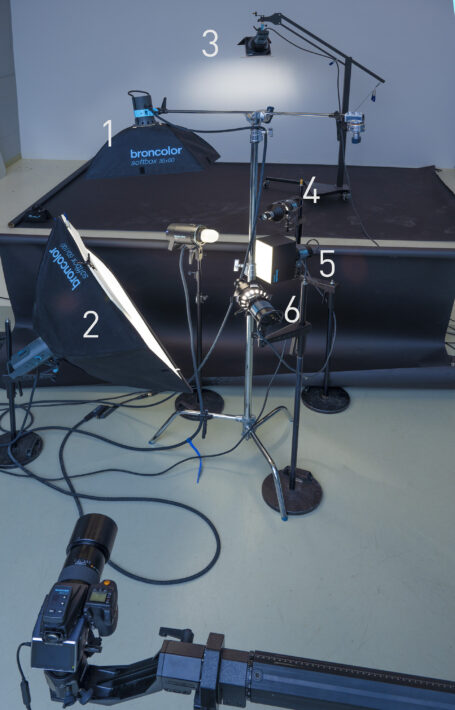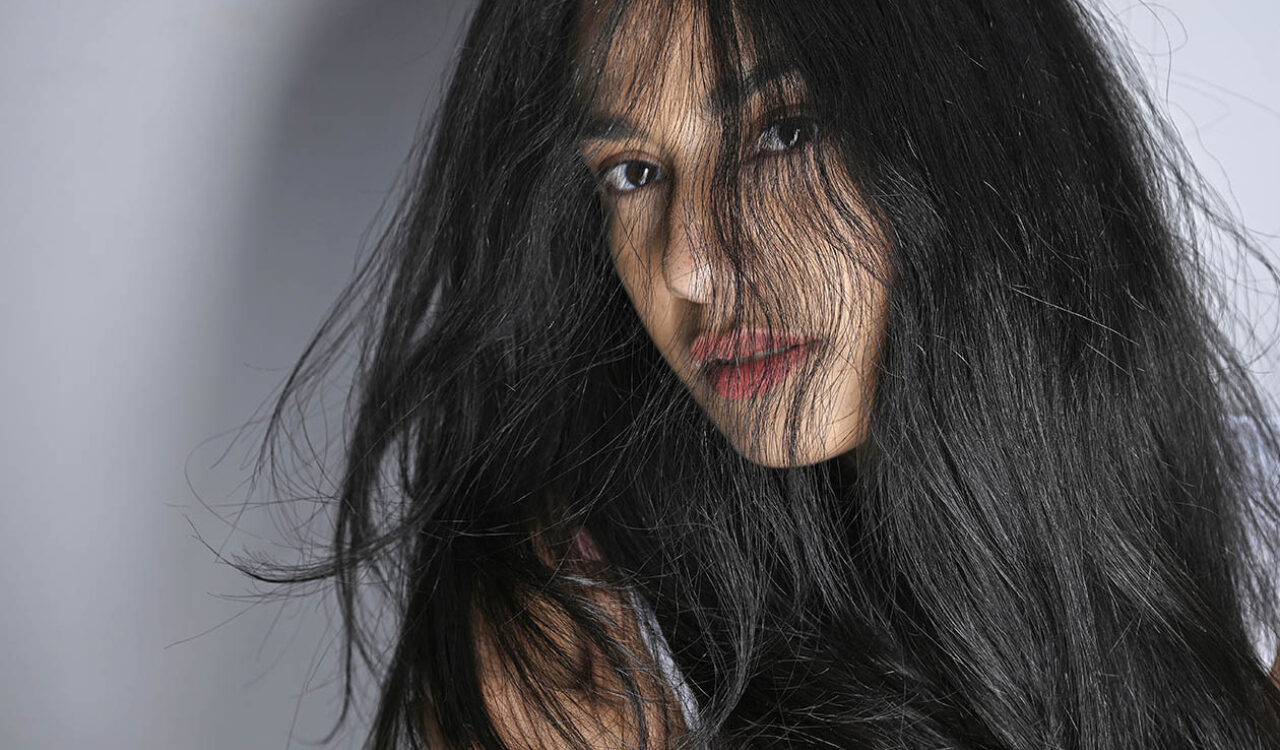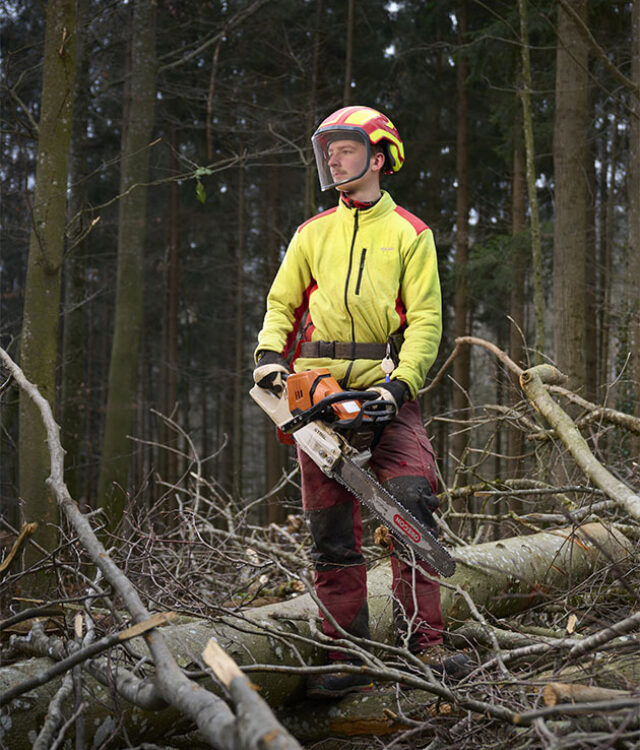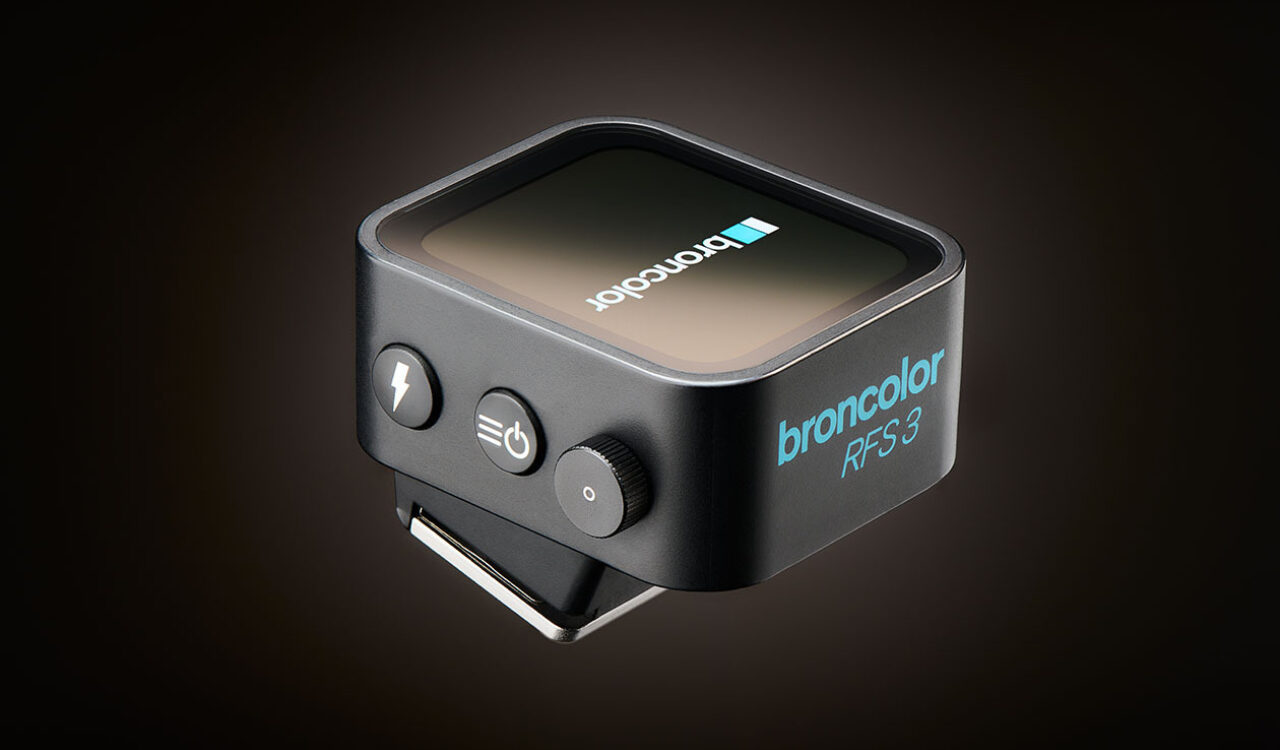How to: Photographing Pulso L
During the last years, before the era of Satos and Pulso L, we at broncolor usually photographed the products on a completely black background - a dominant white contour always determined the lighting. With the new product family, however, we decided on a discreet, dark grey halo behind the product, which allows us to work with black contours.

The 35x60 cm softbox (1) can probably be called the main light for this shot. I chose the smallest of all broncolor softboxes so that its reflection could be placed on the lamp above the brand name and still allow a black upper edge.
A slightly larger softbox (2) served as a discreet brightening. Its upper edge was covered with cardboard so that the reflection did not interfere with the white product name.
Since the fixture is an elongated object, I used a 5:1 honeycomb grid (instead of a classic concentric honeycomb grid) in the P70 reflector (3) to illuminate the background. The black background paper directly behind the set and on the white floor prevented unwanted lighting of the background wall.

Furthermore, three Picolites were used - two of them with a projection attachment. The first (4) illuminated the matt protective glass of the Pulso L from behind and made it appear brightly lit. The second Picolite (6) was needed to brighten up the very dark area between the protective glass and the lamp head.
The third and last Picolite (with Picobox - 5) created discreet reflections on the flat surfaces on the right and thus cleanly separated the luminaire head from the dark background.
Photographs were taken with a medium format camera and a focal length of 150mm. At a sensitivity of ISO 100 and aperture 22.0, the exposure time was 1/3 s.













